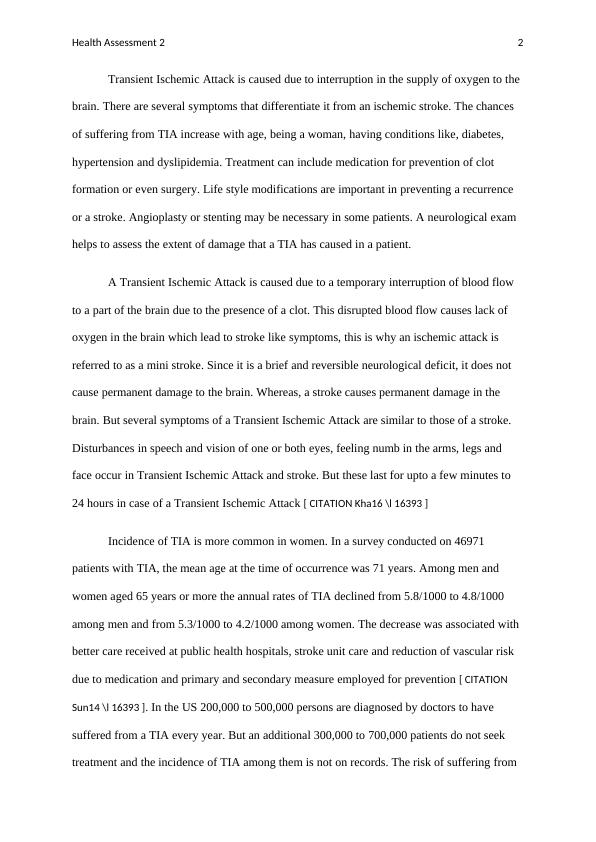Ask a question from expert
CNA 155: Clinical Reasoning Report | Transient Ischemic Attack
6 Pages1602 Words325 Views
Griffith University
Health Assessment (CNA155)
Added on 2020-03-13
About This Document
The below report discusses a case study which is based on Transient Ischemic Attack . in this case study it discusses the causes of the disease with respect to a patient who suffers the Transient Ischemic Attack.
CNA 155: Clinical Reasoning Report | Transient Ischemic Attack
Griffith University
Health Assessment (CNA155)
Added on 2020-03-13
BookmarkShareRelated Documents
End of preview
Want to access all the pages? Upload your documents or become a member.
Stroke: Causes, Symptoms, and Consequences
|13
|707
|39
How are stroke patients diagnosed and what treatments are they given?
|6
|1418
|21
Self Management Nursing Report 2022
|9
|2152
|49
Assignment on Guidelines for Carotid Endarterectomy
|6
|1317
|22
Case Study Analysis of Stroke Patient
|12
|3093
|58
Stroke: Symptoms, Causes, and Treatment
|15
|639
|92


